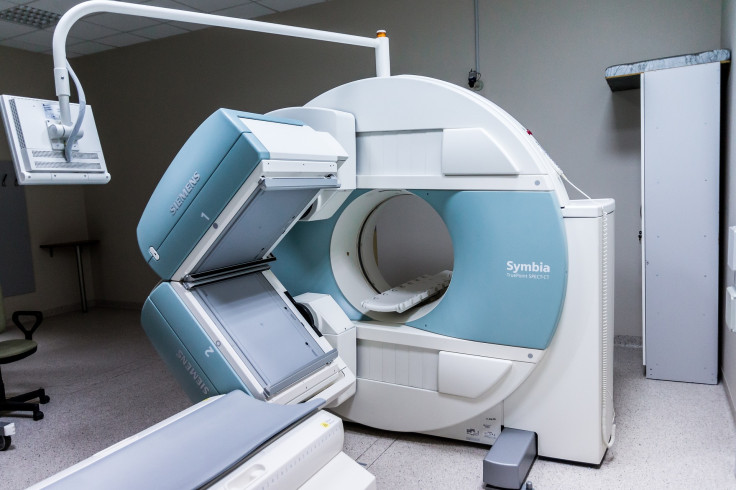Precision Patient Monitoring Can Prevent Millions Of Cancer Deaths Each Year
Precision Patient monitoring - where an individual's health can be monitored through technology regularly, or even in real time - has, in recent years, gone mainstream.
Fashionable and affordable devices like the Apple Watch have made real time tracking of health metrics like pulse rate, blood pressure, and other factors accessible to many.
But monitoring tech is in danger of being a health fad, and not addressing the most serious - and life-threatening - health challenges.
A prime example of that is cancer detection. Tissue samples taken from potential tumors are an effective way of testing for cancers once possible symptoms of the disease are identified, but health systems are still lacking when it comes to detecting cancer recurrence.
For some cancers, recurrence rates are close to 100%. That means that treating cancer is just one part of the puzzle. We have to always be watching for when it (sometimes almost inevitably) comes back.

Waiting for symptoms to re-emerge, and then being reactive, is a high risk strategy. We can do better.
"Tissue is often an issue" Using tissue samples is expensive and unpleasant for patients: Going to see a Doctor regularly for an invasive procedure where tissue samples are extracted surgically is not a good patient experience. Most patients don't want that, and health providers don't (or often can't) pay for that as an ongoing lifelong process. Besides, it's often too little too late.
That's why Liquid Biopsy is gaining ground because it is relatively easy to administer, is not invasive for the patient, and is cost-effective for the health provider - especially when compared to the cost of treating cancer reactively.
However current popular Liquid BIopsy Tests are focusing on cell-free DNA or ctDNA which has limited information about the actual Tumor. Circulating Tumor Cell (CTC) tests are key, as CTC's carry 100 times more information than cfDNA and represents the original tumor that have spread through the body. This is often through blood vessels or the lymphatic system.
Detecting these 1-in-a-Billion cells with high sensitivity, high specificity & low cost is key for the future of liquid biopsy. An early CTC test is a very good predictor for a patient surviving any subsequent cancer diagnosis.
So why isn't this being more widely adopted? Why isn't every cancer survivor being automatically enrolled on a lifelong program of CTC tests?
Firstly, CTC Historically gave an indication of a problem but fell short of providing a solution.
Oncologists don't like "just data", they want to have actionable insights. The good news is that the new innovation in liquid biopsy technology CTC 2.0 that can capture these rare cells, isolate them without fixing, enrich them for generating enough DNA for performing NGS test (next-generation sequencing) and generating loads of Genomic data. AI-powered multi-omics data and analytics can do an early detection of metastasis & provide a path forward to proactively manage the patient with high degree of confidence.
Secondly, as with any new technology, it takes time for regulators to catch up with the latest research. Even when a tech has been broadly validated by peer-reviewed journals, regulators (who sometimes operate with a degree of bureaucracy) can take years to green light wider adoption.
Thirdly, this may be seen as a cost for health providers. Although there is an undeniable business case for pre-emptive detection of cancer recurrence rather than reactive treatment (several CTC tests are far lower in cost than rounds of chemotherapy, for example), the upfront cost in products, systems, and training may deter some health providers.
Fourthly, there is a need for patient education. The only way to reliably and non-invasively screen cancer survivors for recurrences is next generation Liquid biopsy CTC tests. If every cancer patient knew that, and demanded that from their Doctor, healthcare providers would then encourage regulators to speed up the process of licensing. The demand is certainly there: 60% of 1-year cancer survivors have moderate to severe concerns about their cancer recurring.
That isn't a shadow they should be forced to live under, especially when the technology exists to dispel it.
Patient monitoring has been enthusiastically adopted over the last several years, but this approach to healthcare is still in its infancy. It can offer us much more and, if applied to the very biggest healthcare challenges, save many more lives.
And it can do so while improving patient experience and lowering costs for healthcare provision.
CTC tests may not be as usable, fashionable, or affordable as an Apple watch, but they are proven to have the capability of saving many more lives. In the United States alone, there are over 18 million cancer survivors, making up more than 5% of the population. The need - and the opportunity for saving lives, and improving quality of life, is huge.
About the Author: Mohan Uttarwar is CEO of OneCell Diagnostics, a genomics-based Precision Oncology company, based in Silicon Valley, CA and with India operations.





















